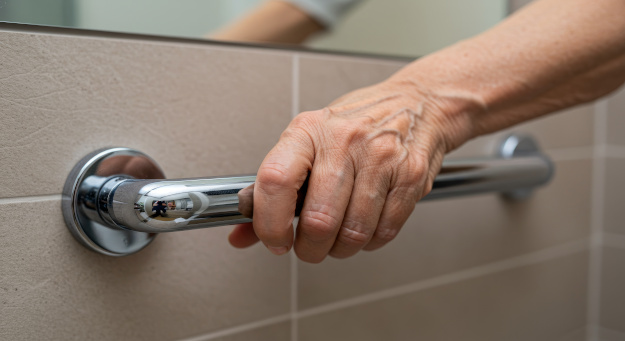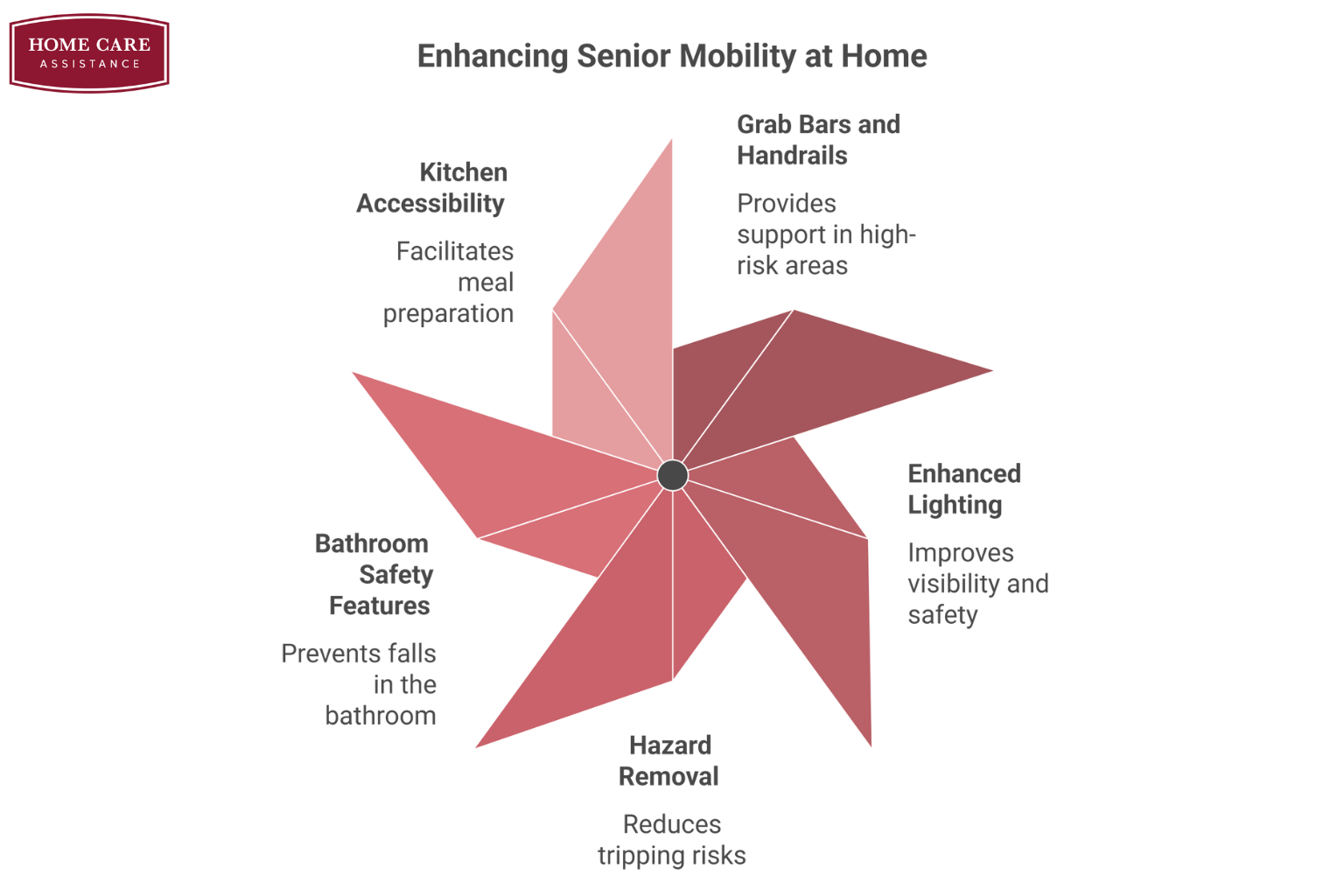
Table of Content
Maintaining independence at home becomes more challenging with age, but simple modifications can make a significant difference in safety and comfort. Small changes to your living space can prevent falls, reduce strain, and allow your elderly family member to navigate the home with greater confidence and ease.
Install Grab Bars and Handrails
Strategic placement of grab bars and handrails provides crucial support in high-risk areas throughout the home.
Key locations for installation:
- Bathroom walls near the toilet and shower
- Both sides of staircases
- Hallways, especially near bedroom and bathroom entrances
- Garage entry points
Choose grab bars with textured surfaces for better grip, and ensure they’re mounted into wall studs rather than just drywall. Professional installation is recommended to guarantee proper weight capacity and security.
A trained caregiver with experience in caring for seniors with mobility limitations can be a fantastic resource for your whole family. In-home care experts are available to provide high-quality care to seniors on an as-needed basis. From assistance with mobility and exercise to providing transportation to the doctor’s office and social events, there are a variety of ways professional caregivers can help your aging loved one continue to live independently.
Enhance Lighting throughout the Home
Poor lighting contributes to many falls among elderly individuals. Enhanced illumination can help your senior loved one identify obstacles and navigate safely during both day and night.
Essential lighting upgrades:
- Motion-sensor lights in hallways and bathrooms
- Under-cabinet lighting in the kitchen
- Brighter bulbs in existing fixtures (aim for 100-watt-equivalent LED bulbs)
- Nightlights along pathways from bedroom to bathroom
- Table lamps within easy reach of seating areas
Consider installing rocker-style light switches, which are easier to operate than traditional toggle switches for those with arthritis or limited dexterity.
Remove Tripping Hazards and Clear Pathways
Creating clear, obstacle-free pathways reduces the risk of falls while making navigation easier for those using mobility aids.
Common hazards to address:
- Loose rugs and carpets (remove or secure with nonslip backing)
- Electrical cords across walkways
- Low furniture like ottomans and coffee tables
- Clutter on floors and stairs
- Uneven thresholds between rooms
Ensure hallways and doorways are at least 36 inches wide to accommodate wheelchairs or walkers. Remove or relocate furniture that creates narrow passages.
Modify Bathroom Safety Features
The bathroom poses the highest risk for falls due to wet surfaces and frequent transfers between standing and sitting positions.
Critical bathroom modifications:
- Install a raised toilet seat or toilet safety frame.
- Add a shower chair or bench for seated bathing.
- Replace traditional shower doors with curtains to eliminate stepping over tracks.
- Apply nonslip strips or mats in the bathtub or on the shower floor.
- Consider a handheld showerhead for easier bathing.
Walk-in showers with low or no thresholds provide the safest bathing option, though this modification requires more extensive renovation.
Some seniors only require help with a few daily tasks so they can maintain their independence. However, those living with serious illnesses or severe mobility limitations may need more extensive assistance. Luckily, there is professional live-in care Philadelphia seniors can rely on. Home can be a safer and more comfortable place for your loved one to live with the help of an expertly trained and dedicated live-in caregiver.
Enhance Kitchen Accessibility
Kitchen modifications help elderly individuals maintain their independence in preparing meals while reducing physical strain.
Practical kitchen adjustments:
- Lower frequently used items to counter level or easily accessible shelves.
- Install pull-out shelves in cabinets to eliminate deep reaching.
- Add lever-style handles to cabinets and drawers.
- Ensure adequate task lighting over work areas.
- Keep a lightweight step stool with handrails nearby for higher shelves.
Consider D-shaped handles on appliances and cabinets, which are easier to grip than traditional knobs, especially for those with arthritis or limited hand strength.
These modifications don’t require major renovations or significant expense, yet they provide substantial enhancements in safety and accessibility. Start with the most critical areas like bathrooms and staircases, then gradually address other spaces based on your loved one’s individual needs and mobility challenges.
There are a variety of age-related health conditions that can make it more challenging for seniors to live independently. However, many of the challenges they face can be easier to manage if their families opt for professional senior care. Philadelphia families can rely on expertly trained caregivers to keep their loved ones safe and comfortable while aging in place. Home Care Assistance will work with you to customize a care plan that’s just right for your loved one’s needs. Call one of our friendly Care Managers today at (215) 645-4663 to learn more about our customized care plans.
